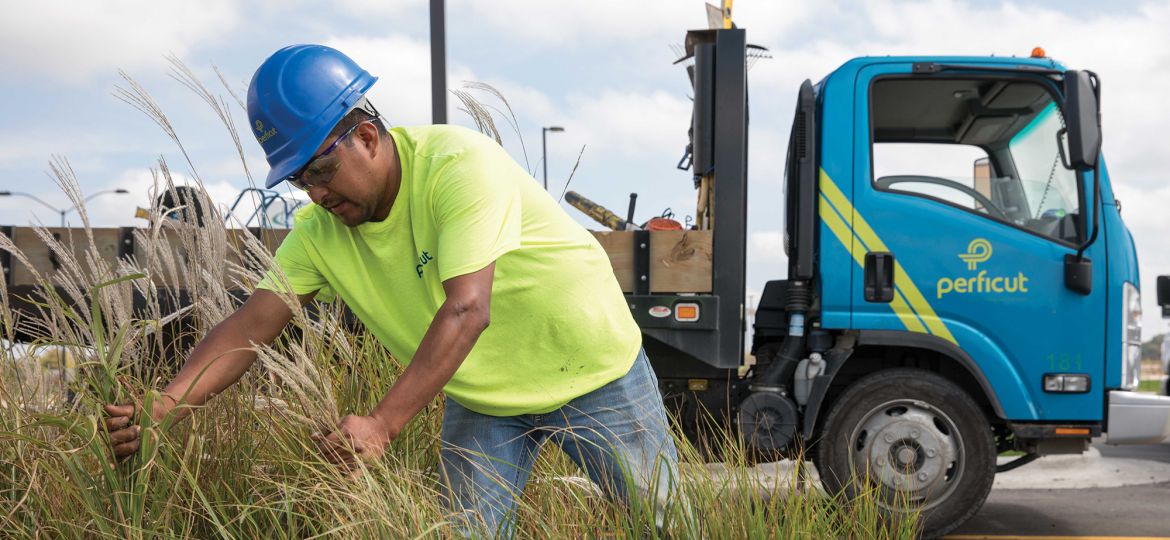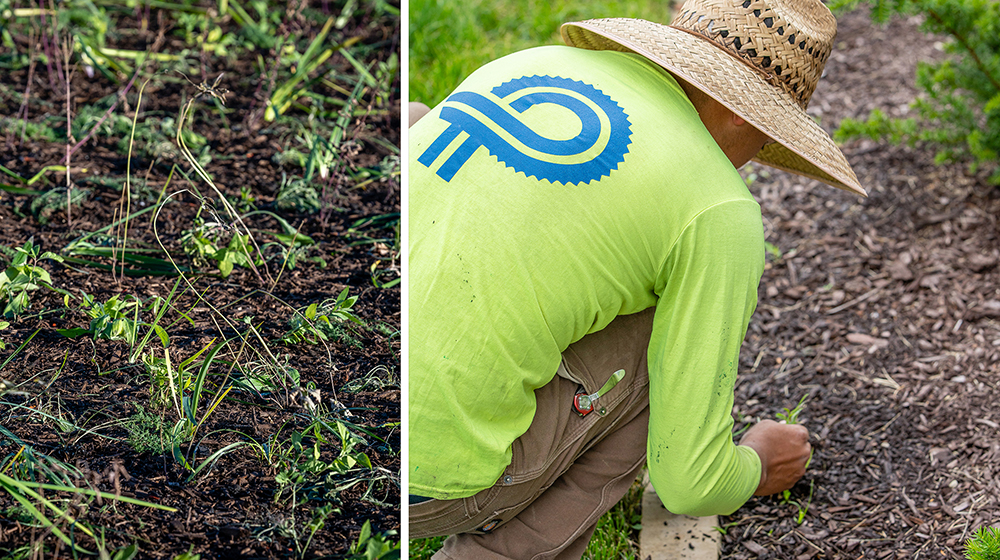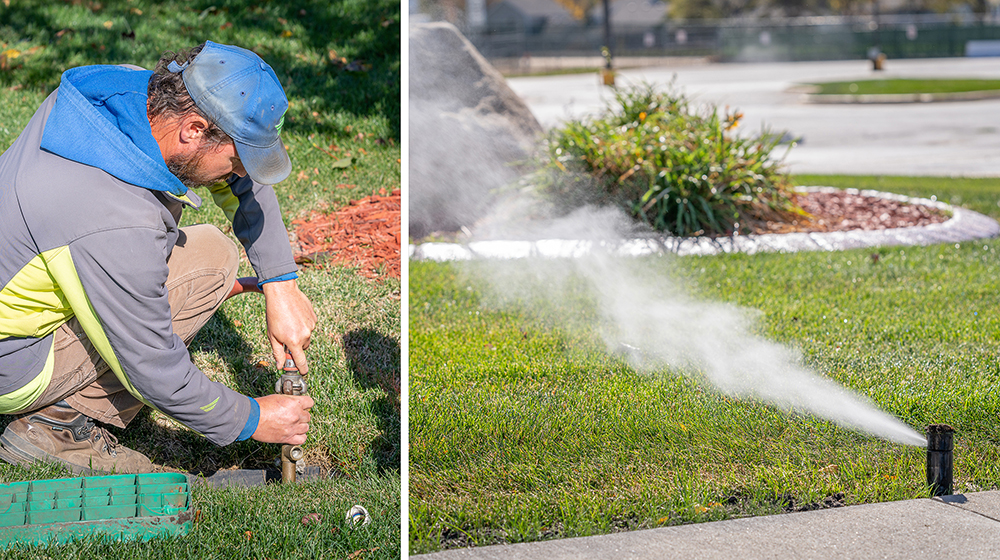
You might think you have plenty of time before “green season” kicks into gear. But there are several things you can do right now to set up your landscape to be its best. Here are the top five tasks to do this spring

 CLEAR GARDEN BEDS
CLEAR GARDEN BEDS
There’s no specific order for this list, but one of the first things Perficut recommends is clearing the soggy, stale debris from garden beds. This might mean clearing away mulch that shows the white powdery signs of mildew, removing annuals from the previous season, and pruning any perennials that need to be cut back. It’s important that they’re still dormant (not showing buds or new green shoots) and to make sure that the plants do well with spring trimming.

 CHECK IRRIGATION SYSTEMS
CHECK IRRIGATION SYSTEMS
If you have an irrigation system, it’s time to check that it’s ready for the season. Perficut’s team of experts will check for lines that have been damaged or sprinkler heads that got knocked askew during the winter. Then, our irrigation techs will flush the system, look for needed repairs, and get the lines ready to go. Reach out today to set up an appointment for a spring start-up.

 AERATE AND FERTILIZE
AERATE AND FERTILIZE
Your lawn will breathe a sigh of relief if it is aerated in early spring. Aeration removes small plugs of soil so the turf has better access to air, water, and nutrients. Allowing more room for grass roots to spread out and grow in the spring also helps reduce stress for the lawn later in the hot and dry summer months. If you follow aeration with fertilization, you’ll increase the impact the food will have on your cool-season grass plants, too. The nutrients in the fertilizer will be able to reach deeper into the lawn. Pre-emergent weed control will also work better after early spring aeration.

 PLANT TREES AND SHRUBS
PLANT TREES AND SHRUBS
It’s important to check soil conditions to determine if it’s time to plant new trees and shrubs. The soil is workable if it’s no longer frozen, but also not too wet. Squeeze a handful of dirt in your hand: If it sticks together, it is too wet. If it crumbles and falls apart easily, it’s workable.
Early spring is a good time to plant dormant bareroot perennials, trees, and shrubs. Cold-tolerant annuals can also be planted now, but check that they’re hardy for our growing zone (Iowa is in zone 5). If you are planting potted perennials, choose ones that are acclimated to the cool temperatures, meaning they were grown outside or in cold frames. The shock of cold spring temperatures can kill plants that are grown in climate-controlled greenhouses, so it’s best to wait on those until a couple of weeks after the threat of frost is past.

 DIVIDE PERENNIALS
DIVIDE PERENNIALS
Early spring is also an ideal time to divide perennials. Plants go through a period of shock when they’re divided, so the cool, moist weather right now helps them recover. First, determine what needs to be divided: If the plant has slowed its growth or has reduced blooms, has outgrown its spot in the landscape, or has a hole or dead spot in the center, it’s a good idea to divide it. (There are a few plants that should not be divided, such as poppies, so check a garden resource about your particular plant before you dig.)
Similar to any planting project, check the soil condition before you start (see Planting Trees and Shrubs above). If the soil is workable, you’re good to go. Use a sharp spade to slice through the turf about 6 inches from the root ball. Loosen and remove the entire root ball if possible. If the plant has a spreading, interwoven root system like ornamental grasses, use a sharp knife or the blade of the spade to cut apart sections. If the plant has separate shoots, such as hostas, divide the plant into individual clumps with three to five shoots each. Plant the clumps in new locations and water well for several weeks to get the roots reestablished.
